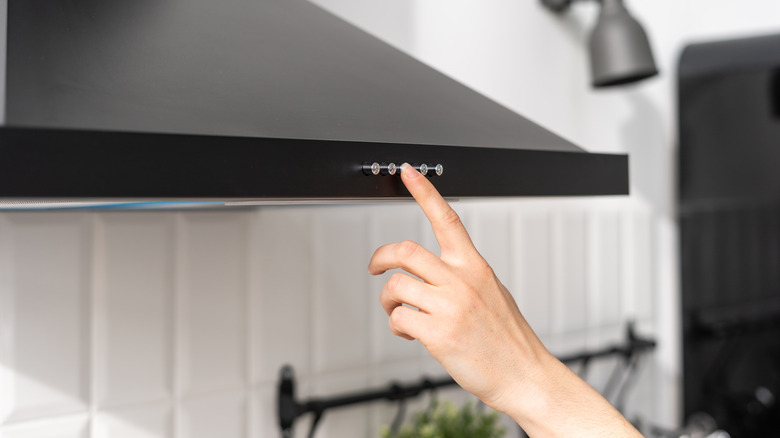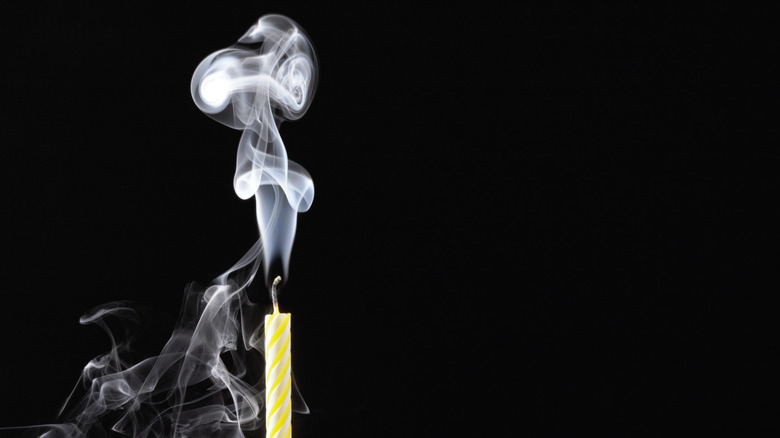The Candle Trick To Test Your Oven Hood Before Cooking
Your kitchen hood is an essential tool for keeping your kitchen clean and safe while cooking — in fact, it's the one part of your kitchen you should start cleaning more. But if you've noticed that any smoke, strong aromas, or vapor seem to be pushed around the room rather than pulled out through the hood, then you might be wondering if it's working properly. Fortunately, there is a very simple and straightforward way to test whether or not your hood is pulling the air out of the kitchen as it should be.
The easiest method to test your kitchen hood is to use a candle. By using a candle, you can quickly see whether or not the hood is working as it should. Thanks to the smoke from the candle, you can clearly see how the air flows when the hood is turned on or if the fan simply blows the smoke around. Best of all, this trick doesn't take long for you to do yourself.
Watch the smoke
To check the hood using a candle, start by lighting the wick and letting the candle burn for a few moments. Next, blow the candle out and hold it underneath the hood — at least six inches below or just on top of the cooking surface. Turn on the hood's fan and watch the smoke to see how it moves once the fan is running.
If the hood is working properly, the smoke should be pulled toward the hood. This happens because the hood is creating a suction that pulls in the air from your kitchen, including any smoke, steam, or other contaminants. If the flame doesn't move toward the hood or is only partially pulled toward the hood, this is a sign that your hood isn't working properly.
If the hood doesn't appear to be working properly, it could be that the hood is clogged with grease or other debris. The fan might not be working as it should either. In this case, you'll want to clean or repair your hood before using it again.
So, if you have a feeling the hood isn't up to its job, try this technique to test its function. You just might need to examine it a bit closer to find the right solution.

